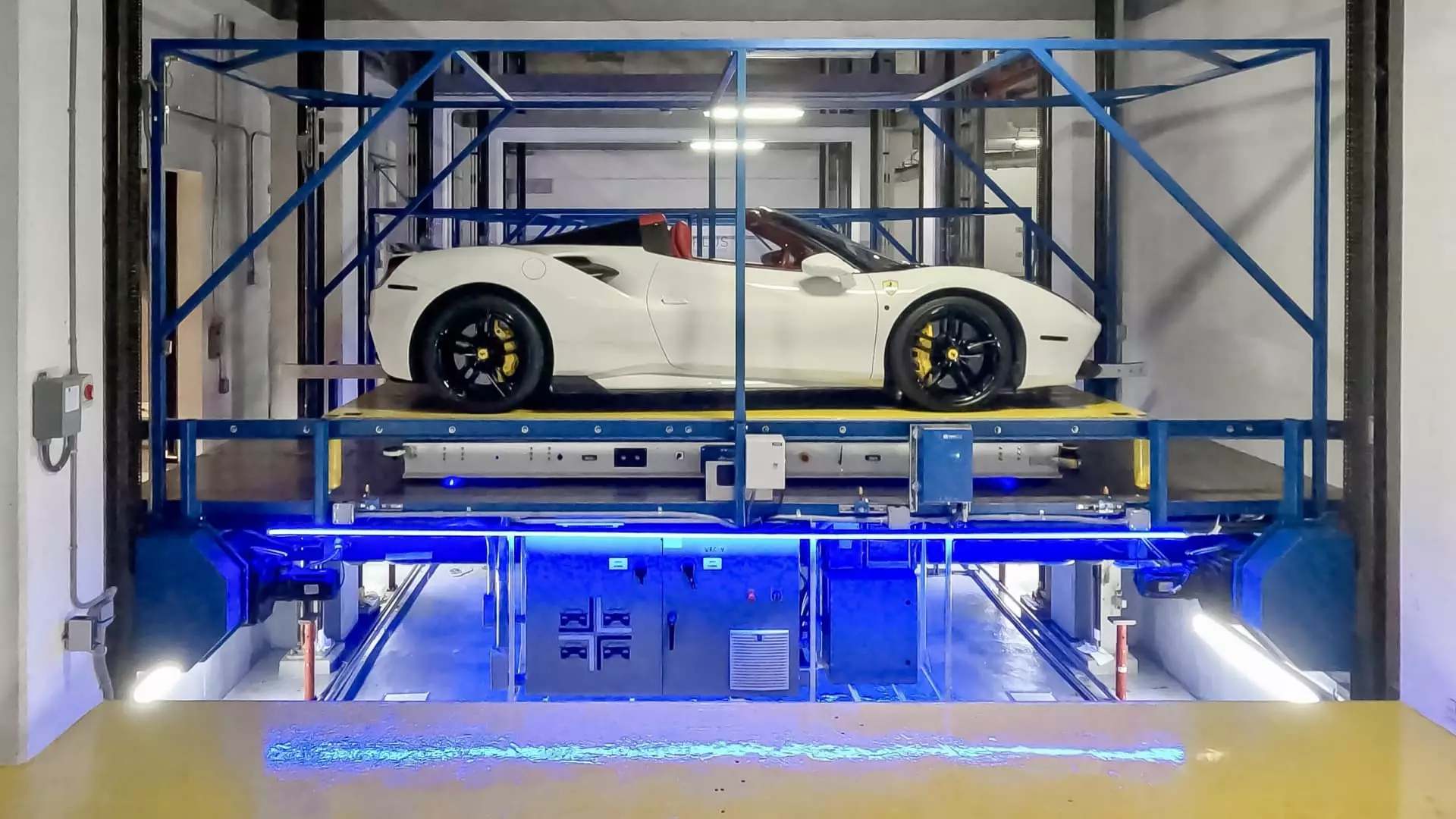In the realm of modern urban architecture, the emergence of automated parking systems signifies a profound shift in how we manage residential spaces, especially in densely populated urban centers. One such groundbreaking implementation is found within the Brickell House, a soaring 46-story condominium nestled in the heart of Miami. Within its walls lies a 13-level garage that employs a fleet of advanced robots to efficiently park and retrieve vehicles, thereby redefining the parking experience for its residents.
The automated parking system at Brickell House serves as a testament to cutting-edge technology’s application in everyday living. Operated by 29 autonomous vehicles known as Automated Guidance Vehicles (AGVs), this parking garage is designed to enhance convenience while conserving space. Each AGV is equipped with advanced vision systems, lasers, and bar code readers that enable it to navigate seamlessly through the garage. The robots, which measure 12 feet in length, utilize lifting mechanisms to hoist vehicles weighing up to 6,000 pounds, showcasing a level of engineering sophistication.
Residents entering the parking structure are relieved of the tedious task of searching for a parking space. They simply drive into one of the designated bays, and the robots take over, positioning cars with remarkable precision—often leaving just two inches of space between them. Notably, this system allows for a much more streamlined parking experience, eliminating the need for wide aisles and turnarounds typically required in traditional garages.
The Commercial Appeal of Automated Systems
Automated parking solutions are rapidly becoming a sought-after feature in luxury real estate markets across cities such as New York and Miami. The Brickell House stands out, not only for its architectural elegance but also for its innovative approach to parking. According to industry insights, the global smart parking market is poised for substantial growth, projected to soar from $6.5 billion in 2021 to an estimated $30.16 billion by 2030. This surge can largely be attributed to urban developers eager to maximize limited space while providing modern amenities that attract affluent buyers.
The allure of prominent parking spaces is underscored by the staggering costs associated with them. In some luxury condominiums, ownership of a parking spot can demand an additional expenditure of $300,000 or more. At Brickell House, even a multi-million dollar penthouse comes bundled with multiple coveted spots within the automated parking facility, establishing it as a desirable residence.
One of the greatest advantages of automated parking systems is their ability to optimize space utilization. A well-designed system can use available square footage significantly more efficiently compared to traditional garages—up to three times better, according to Peter Manis of ParkPlus. By removing the necessity for ramps and expansive turning spaces, developers can allocate more area for living quarters rather than parking, effectively enhancing the property’s overall value and appeal.
Not only does this innovation cater to luxury living, but it can also serve various sectors, including car dealerships, hospitals, and hotels that benefit from more accommodating parking facilities. Nevertheless, the implementation of such advanced system technologies does not come without challenges.
Challenges and Legal Concerns
As with any novel tech application, the incorporation of automated parking systems has its share of hurdles. For instance, prominent incidents relating to malfunctioning systems have raised scrutiny regarding their reliability. A notable case involving billionaire entrepreneur Palmer Luckey highlighted potential complications when an elevator in his private garage malfunctioned, leading to legal action over substantial damages.
Similarly, the Brickell House has faced its own rollercoaster ride with parking logistics. Prior to the installation of the state-of-the-art AGV system, the condominium dealt with significant issues involving an earlier parking mechanism that reportedly trapped vehicles, resulting in the building operating without a functional garage for an extended period. Residents found themselves caught in turmoil, pointing to the necessity for rigorous testing and reliability in automated systems.
Moving forward, the advancements in automated parking technology will likely continue to evolve as urban spaces grapple with increasing population densities and the resulting demand for innovative solutions. The Brickell House represents a defining moment in the convergence of luxury living and high-tech amenities, showcasing how automated systems can craft a new standard of convenience and efficiency in urban environments. As developers strive to integrate these systems while addressing the challenges, the foundation for smarter and safer avenues of living is being laid down, paving the way for a future where automated technology becomes an integral part of urban architecture and everyday life.

